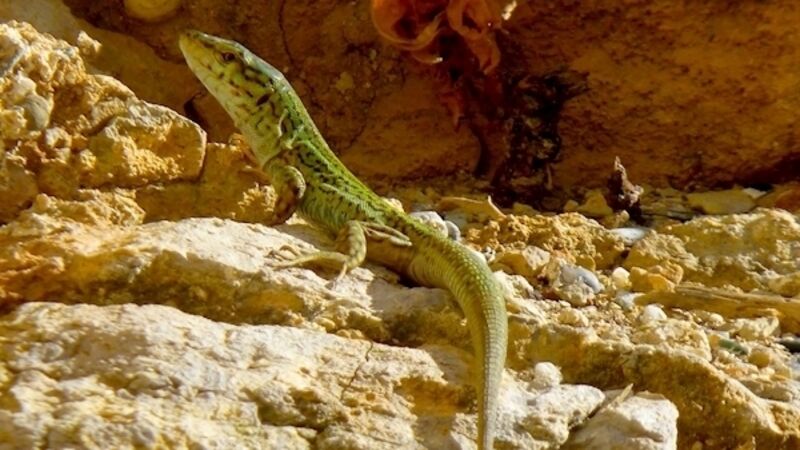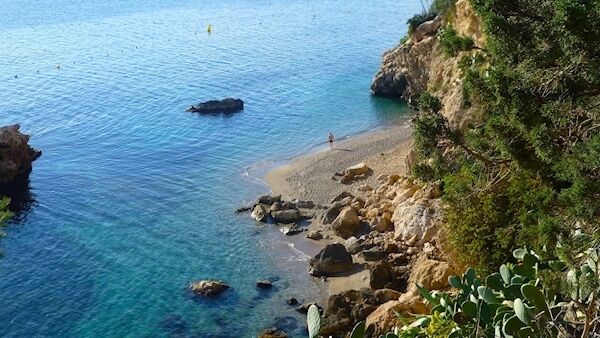Invasive snakes threaten native lizard species on Ibiza

Snakes never reached Ireland. writes Islands often escape them — New Zealand, Newfoundland, Iceland and Greenland have no snakes nor, until recently, did the island of Ibiza in the Balearics, off the Mediterranean coast of Spain.
Bes, the god after which the island is called (Ibosim: island of Bes) was credited with keeping them away. Ibiza’s absence of snakes was recognised by the naturalist Pliny the Elder two thousand years ago.
It had been one of the reasons the Phoenicians and, after them, the Carthaginians, decided to settle here.
Beginning in 600BC, into the island’s ochre bedrock they could carve a necropolis of 4,000 subterranean dwellings for their (wealthy) dead without the fear of snakes making nests in the sarcophagi.
Our St Patrick was credited with sending Irish snakes away but in fact, they never arrived. The last ice age made it too cold for reptiles to survive in Ireland.
When it ended, melting ice raised sea levels and cut off the link to Britain into which, at the time, four species of legless reptiles were slithering from continental Europe to join the Ancient Brits.
The Brits, colonised, as they were, by Europe’s snakes and various flora and fauna, now want nothing to do with the continent that endowed them with such variety and riches.
Some might say they are ungrateful, other that they don’t know a good thing when it drops through their letterbox.

Anyway, grass snakes, smooth snakes, barred grass snakes and adders all made a home there but couldn’t reach Ireland.
Only the quick warning of a vigilant son saved me from being bitten by a venomous adder at the top of Goat Fell, the highest peak on Scotland’s Isle of Arran.
Stepping backward to admire the view, my next step would have come down upon it. It would have bitten me in righteous retaliation and I might have been on the highway to oblivion.
Scientific consensus tells us that Patrick did not expel snakes: there were none.
The god Bes, depicted as a doughty bon viveur and celebrant of life, patron of wine, food, partying and dance — his patronage of all aforesaid is alive and well in holidaymakers’ Ibiza today — has, however, as a result of modern fashion and modern transport, been found wanting in snake prevention.

Four species have arrived in Ibiza in the last 15 years. Invasive snakes are now a problem.
Horseshoe whip snake, ladder snake, false smooth snake and Montpellier snake species are all thought to have come to Ibiza in ancient olive trees.
These trees arrived from southern Spain solely to grace the surroundings of the numerous many-million-dollar-value houses in Ibiza villages and countryside.
These same house, pre-renovation and tarting up, could have been bought for five bob (or, well, 500 dollars) when I lived there in the early 1960s.
The snakes were, no doubt, inside the trees. Elderly olives have countless holes and niches in the trunks and roots. Spanish specimens can be 2,000 years old and are transported live, and replanted.
Some trees in Lebanon are reputed to be 6,000 years old and still producing olives which yield a treasured oil.
Ladder Snake https://t.co/JGfqM1VREN #sepia #trees pic.twitter.com/7bdbZNoI3d
— 📷 Eyesshare photography (@eyesshare) February 3, 2019
The snakes may have been hibernating or chilling out; in any case, it would seem that they waited until the trees were replanted before emerging.
The horseshoe whip snake is presently the problematical one. The other species seem to be struggling to find an ecological niche.
The whip snake is up to 1.5m long and is finding a ready food source in the native Ibizan Wall Lizard.
This attractive green lizard now provides more than half its prey. Such heavy predation may threaten its survival. Lesser, uninhabited islands support small populations which have been there for aeons.
Wow! Blink and you miss it. Montpellier Snake catched a White- throated kingfisher who was probably trying to catch it.
— Nili and David Jerusalem Bird Observatory (@JerusalemBird) August 21, 2018
Photo by #ariehshimron#snakesofisrael pic.twitter.com/60WSSfWDIA
Whip snakes have been seen swimming in the sea and a shed whip snake skin was recently found on one islet.
An eradication programme using traps baited with live mice, later released, is currently being tested.
Invasive species, more often than not, take their toll on natives. The grey squirrel, in Ireland, led to decimation of the reds.
The lifting of the shoot-on-sight policy of Irish pine martens immediately made a difference.
Where pine martens re-established themselves, the number of grey squirrels reduced radically, while reds, more difficult for the pine martens to catch, moved in to recover their territory.
They are making a welcome recovery.
My son told me that the other day, in west Cork, he saw five buzzards cruising between earth and heaven, “like turkey vultures in Colombia”.
It seems that buzzards, like little egrets, will soon be a familiar sight. These magnificent birds are unlikely to threaten any native species.
For decades they have been common in Wales, and have caused no problems there.













